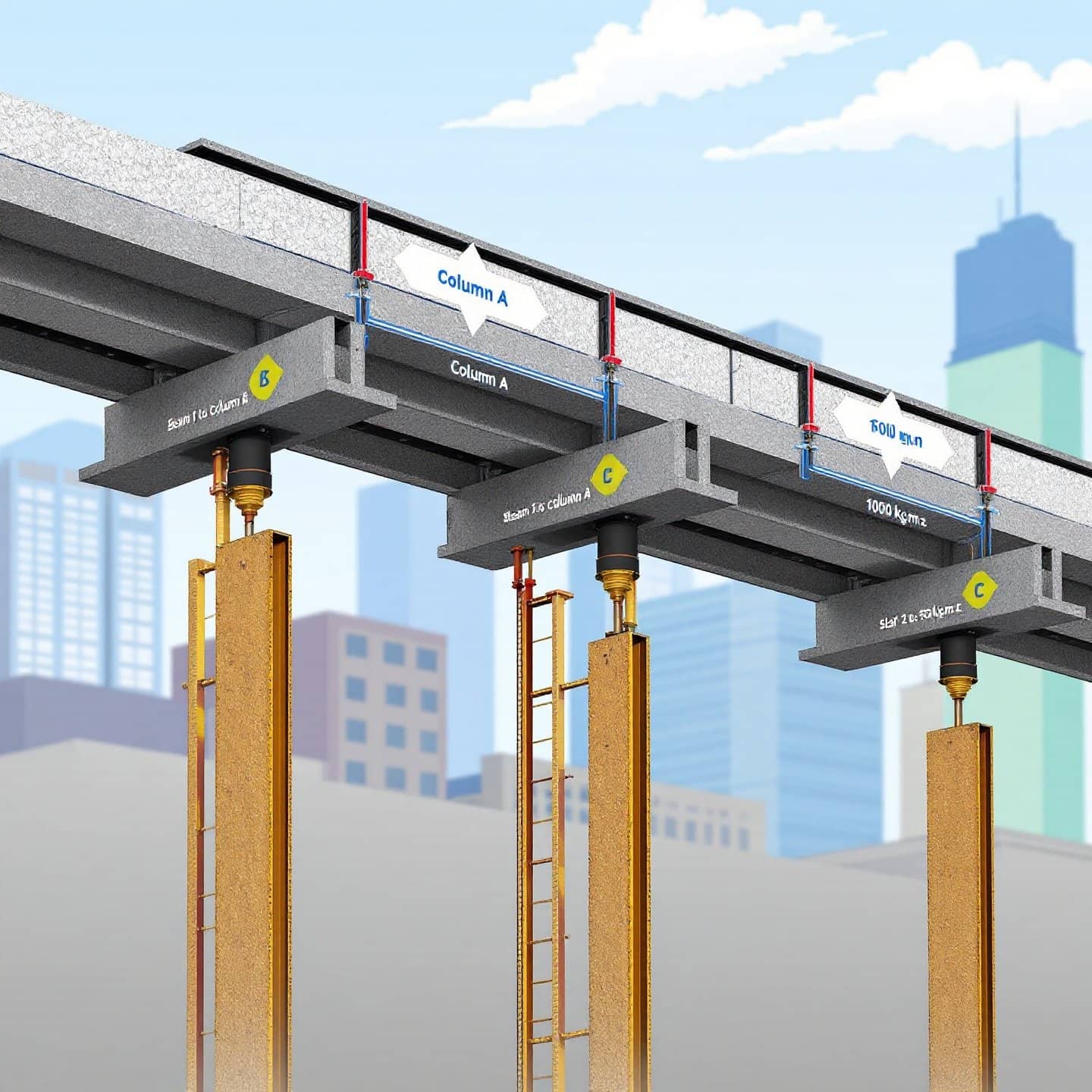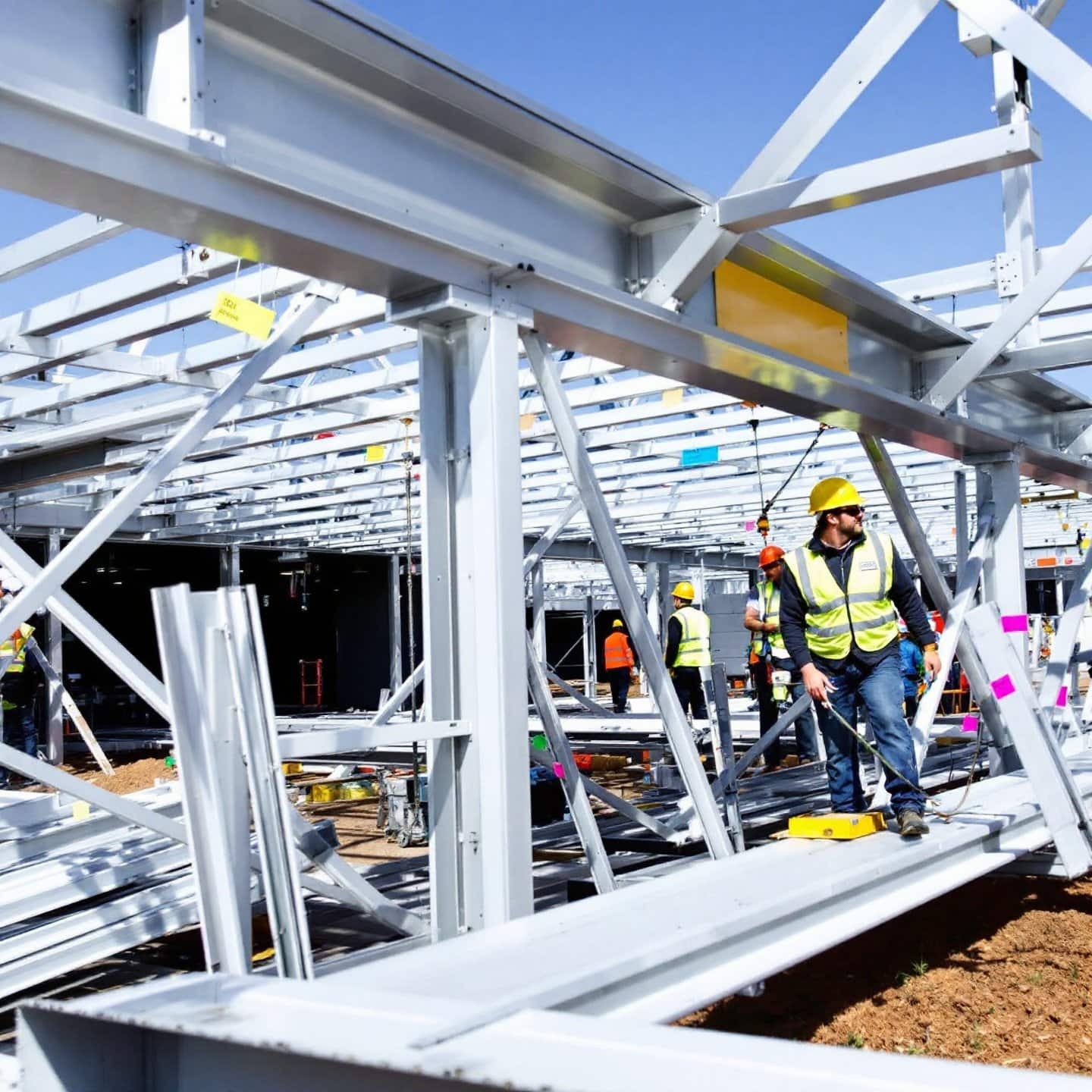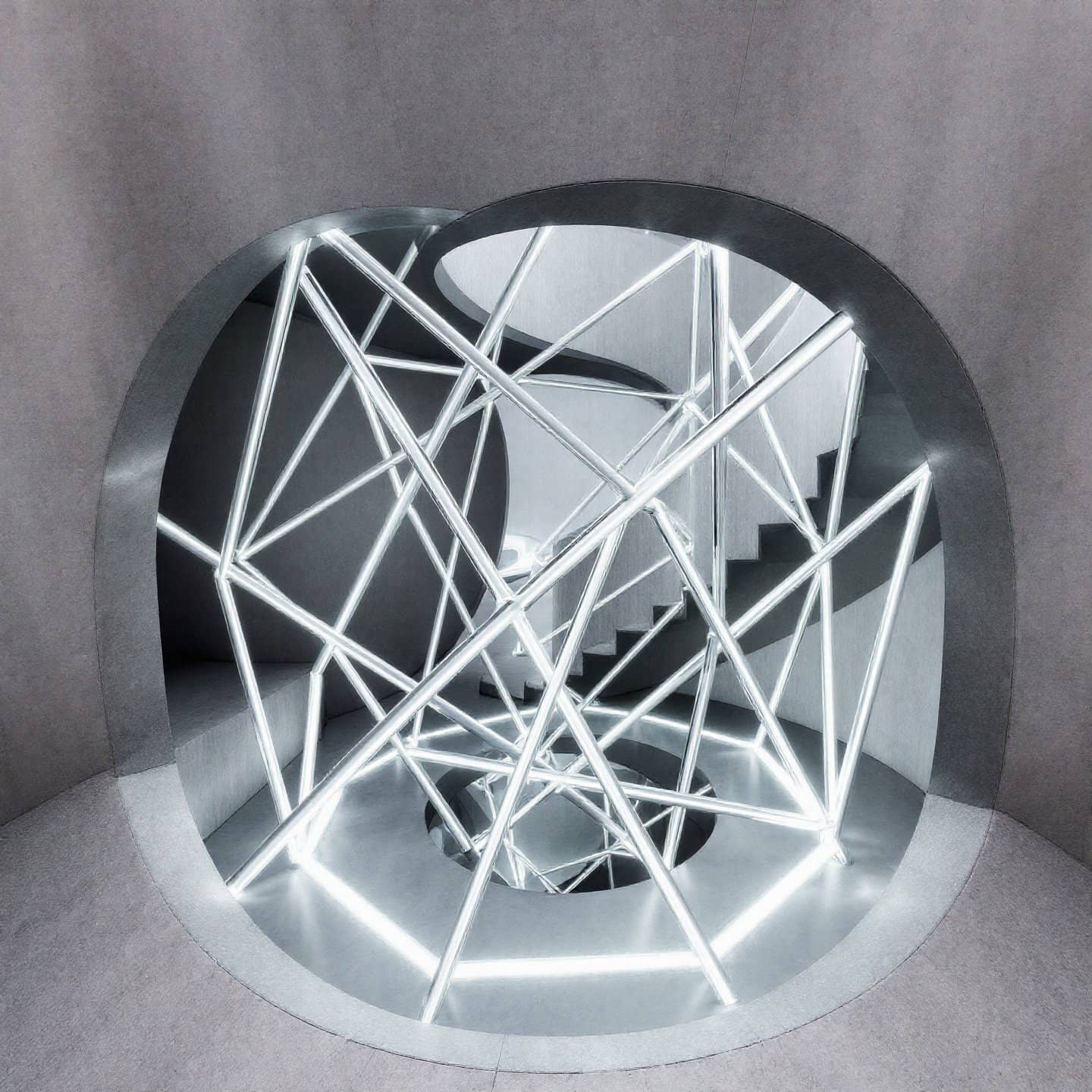Concrete Frame Structures vs. Aluminum Structural Framing: A Comparative Analysis

Concrete Frame Structures and Aluminum Framing: A Modern Construction Dilemma
In the realm of modern construction, the choice of structural materials plays a pivotal role in shaping the durability, efficiency, and aesthetics of buildings. Among the most prevalent choices are concrete frame structures, renowned for their robustness and fire resistance, which have been the backbone of skyscrapers, bridges, and residential buildings for decades. These structures, often referred to as concrete skeletons, leverage the strength of concrete and steel to support immense loads and withstand environmental challenges, making them a staple in urban landscapes ( Wikipedia ).
On the other hand, aluminum structural framing emerges as a compelling alternative, especially in applications requiring lightweight and corrosion-resistant solutions. This material is increasingly favored in modular construction, prefabricated buildings, and even temporary structures due to its ease of assembly and recyclability. The debate between concrete and aluminum framing is not just about material properties but also about the evolving needs of the construction industry, which now demands more sustainable and flexible solutions. As we delve deeper into this comparative analysis, we will explore how these materials stack up against each other in various aspects of construction.
Understanding the Fundamentals of Concrete Frame Structures
Concrete frame structures are a cornerstone of modern architecture, providing the skeletal framework that supports many of the world's tallest and most complex buildings. At their core, these structures consist of key elements such as columns, beams, and slabs, which together form a robust and interconnected system. Columns serve as the primary load-bearing components, while beams distribute loads across a building, and slabs provide the horizontal surfaces on which we live and work ( Understand Construction ).
Types of Concrete Frame Structures
- Reinforced Concrete Frame Structures: These incorporate steel reinforcement bars (rebars) to enhance tensile strength, making them ideal for high-load applications.
- Concrete Rigid Frame Structures: Known for their moment connections, these structures are designed to resist bending moments, providing stability against lateral forces such as wind and earthquakes.
- Concrete Portal Frame Structures: Characterized by their clear span capabilities, these are often used in industrial applications where large open spaces are required.
Advantages of Concrete Framing
Concrete frame structures offer several compelling benefits:
- Strength and Durability: Concrete is renowned for its ability to withstand compressive forces, making it a durable choice for long-lasting structures ( S3DA Design ).
- Fire Resistance: Unlike many other materials, concrete does not burn, providing an inherent level of fire resistance that enhances building safety.
- Versatility: Concrete can be molded into various shapes and sizes, accommodating diverse architectural designs and complex structural requirements.
These advantages make concrete frame structures a popular choice for a wide range of applications, from residential buildings to large-scale commercial and industrial projects. As we continue this comparative analysis, the focus will shift to aluminum structural framing, exploring how its properties and applications differ from those of concrete.

Introduction to Aluminum Structural Framing
Aluminium structural framing is increasingly becoming a go-to choice in the construction industry, thanks to its unique properties that set it apart from traditional materials. At the heart of its appeal is its lightweight nature, which significantly reduces the load on building foundations and allows for easier handling and installation. This characteristic makes aluminum an ideal option for structures that require frequent reconfiguration or relocation, such as temporary buildings and modular constructions.
One of the standout benefits of aluminum structural framing is its impressive corrosion resistance. Unlike materials that succumb to rust and degradation over time, aluminum maintains its integrity even in harsh environmental conditions, making it suitable for outdoor and marine applications. This durability translates into lower maintenance costs and a longer lifespan for the structures it supports.
Applications of Aluminum Structural Framing
- Modular Construction: The modular nature of aluminum framing allows for quick assembly and disassembly, ideal for projects that demand flexibility and speed.
- Prefabricated Buildings: Aluminum's lightweight and durable characteristics make it perfect for prefabricated structures, where components are manufactured off-site and assembled on location.
- Temporary Structures: Its ease of assembly and disassembly makes aluminum framing a preferred choice for temporary installations, such as exhibition stands and emergency shelters.
Benefits of Aluminum Framing
Aluminum structural framing offers numerous advantages that appeal to architects and builders alike:
- Ease of Assembly: The modular design of aluminum frames allows for straightforward installation, reducing labor costs and construction timelines ( Automation Werks ).
- Recyclability: Aluminum is a highly recyclable material, which enhances its sustainability credentials and reduces the environmental impact of construction projects.
- Design Flexibility: With a variety of extrusion profiles and accessories available, aluminum framing can be tailored to meet specific design requirements, offering limitless architectural possibilities.
As we delve deeper into the comparative analysis of concrete and aluminum framing, it becomes evident that each material has its unique strengths and applications. The next section will explore how these materials compare in terms of load-bearing capacity, durability, and overall performance.

Comparative Analysis: Concrete vs. Aluminum Framing
| Attribute | Concrete Frame Structures | Aluminum Structural Framing |
|---|---|---|
| Load-Bearing Capacity | High compressive strength, ideal for heavy loads and tall structures ( S3DA Design ). | Lower than concrete but sufficient for lightweight and flexible applications ( Automation Werks ). |
| Durability | Extremely durable with excellent fire resistance and longevity. | Good durability with superior corrosion resistance, especially in harsh environments. |
| Seismic Performance | Excellent due to its mass and ductility, providing stability during earthquakes. | Offers flexibility and energy absorption, reducing seismic forces on structures. |
| Construction Time | Longer due to curing time required for concrete. | Faster due to prefabrication and ease of assembly. |
| Initial Costs | Generally higher due to material and labor costs. | Lower initial costs, especially for modular and temporary structures. |
| Maintenance Expenses | Low maintenance but requires periodic inspections and repairs. | Minimal maintenance due to corrosion resistance. |
| Lifecycle Costs | Cost-effective over time due to durability and low maintenance. | Potentially higher lifecycle costs if frequent modifications are needed. |
| Sustainability | High carbon footprint due to cement production ( Shapes by Hydro ). | Highly sustainable due to recyclability and lower carbon emissions. |
When comparing concrete frame structures to aluminum structural framing, several key attributes highlight their distinct advantages and challenges. Concrete boasts superior load-bearing capacity and durability, making it ideal for permanent and high-load applications. However, its construction time is longer due to the curing process, and it has a significant carbon footprint because of cement production.
In contrast, aluminum structural framing is celebrated for its quick assembly and flexibility, which significantly speeds up construction timelines. Its recyclability and lower environmental impact make it a sustainable choice, particularly for projects prioritizing eco-friendly practices. However, its load-bearing capacity is lower, which may limit its use in certain heavy-duty applications.
Ultimately, the decision between concrete and aluminum framing depends on specific project requirements, including load demands, environmental conditions, and sustainability goals. As we proceed, the integration of these materials in hybrid structures will be explored, showcasing how their combined strengths can optimize construction performance.
Integration of Aluminum Framing in Concrete Structures
Combining concrete and aluminum in construction results in hybrid structures that leverage the strengths of both materials, optimizing overall structural performance. This integration is particularly beneficial in scenarios where reducing weight without compromising strength is crucial. By incorporating aluminum framing into concrete structures, builders can achieve enhanced design flexibility and innovative architectural possibilities.
Advantages of Hybrid Structures
Hybrid structures offer several advantages:
- Weight Reduction: Aluminum's lightweight nature allows for significant weight savings, which is especially beneficial in high-rise buildings and bridges where reducing the load on foundations is essential.
- Design Flexibility: The malleability of aluminum enables architects to experiment with complex geometries and aesthetic designs that are not easily achievable with concrete alone ( Focus ).
- Enhanced Durability: By using aluminum, which resists corrosion, in conjunction with the durability of concrete, hybrid structures can extend the lifespan of buildings and reduce maintenance needs.
Real-World Applications
There are numerous examples of successful integration of aluminum in concrete structures. For instance, using aluminum as reinforcement in concrete can lead to environmentally friendly and durable solutions, as demonstrated by the DARE2C project, which developed low-carbon concrete reinforced with aluminum ( Shapes by Hydro ).
Additionally, in projects across Europe and the United States, hybrid construction techniques have been employed to create aesthetically pleasing and functional buildings, such as schools and corporate spaces, that benefit from fast construction times and reduced environmental impact.
As we explore the synergy between these materials, it becomes evident that hybrid structures not only meet the demands of modern architecture but also contribute to sustainable building practices. The next section will delve into the design considerations when choosing between concrete and aluminum, guiding readers on how to make informed decisions based on project-specific needs.

Design Considerations for Choosing Between Concrete and Aluminum
When deciding between concrete frame structures and aluminum structural framing , several key factors must be considered to ensure the selected material aligns with the project’s unique requirements. Let’s delve into these considerations, which include load requirements, environmental conditions, and aesthetic preferences, all of which play a crucial role in materials selection.
Key Factors in Material Selection
- Load Requirements: The intended load-bearing capacity is a primary consideration. Concrete, with its high compressive strength, is suitable for heavy-load applications like skyscrapers and bridges. Conversely, aluminum, while offering lower load-bearing capacity, is ideal for projects where weight reduction and flexibility are prioritized.
- Environmental Conditions: The surrounding environment significantly influences material choice. Concrete provides excellent fire resistance and is less susceptible to weathering, making it suitable for a variety of climates. Aluminum, with its superior corrosion resistance, is preferable in coastal or humid environments where rust is a concern.
- Aesthetic Preferences: The architectural vision can dictate material choice. Concrete allows for diverse shapes and textures, supporting intricate designs. Aluminum, on the other hand, offers sleek, modern aesthetics with clean lines and is often chosen for its ability to support innovative architectural styles.
Building Codes and Standards
Adherence to building codes for framing is essential in ensuring safety and compliance. Concrete structures often adhere to codes developed by organizations such as the International Code Council (ICC), which provide guidelines on fire safety and structural integrity ( NRMCA ). Aluminum framing must also comply with standards that address its unique properties, such as those related to its load-bearing capabilities and environmental impacts.
Ultimately, the choice between concrete and aluminum framing should be guided by a comprehensive evaluation of these factors, ensuring that the selected material not only meets the structural and aesthetic demands of the project but also adheres to relevant codes and standards. As we conclude this analysis, the importance of consulting with structural engineers becomes evident, as they provide the expertise necessary to make informed decisions tailored to specific project needs.
Choosing the Right Framing Material: A Balanced Approach
As we wrap up our exploration of concrete frame structures vs. aluminum structural framing , it's clear that each material brings distinct advantages to the table. Concrete offers unmatched strength and durability, making it ideal for projects requiring high load-bearing capacity and fire resistance. Conversely, aluminum provides flexibility, ease of assembly, and sustainability, making it a preferred choice for projects emphasizing quick construction and environmental considerations.
When engaging in framing material selection , it is crucial to evaluate the specific needs of your project. Consider factors such as load requirements, environmental conditions, and aesthetic goals. For instance, concrete might be the go-to choice for skyscrapers and bridges, while aluminum could be more suitable for modular or temporary structures.
Consulting with structural engineers is vital to making informed decisions. Their expertise ensures that the chosen material not only meets the structural demands but also aligns with safety standards and codes. This professional guidance can lead to innovative solutions that optimize performance and cost-efficiency.
In the realm of aluminum solutions, Suqian Sunmay Aluminium stands out as a leading provider. Their extensive range of aluminum products, backed by advanced technology and international standards, caters to various sectors from architectural to industrial applications. Partnering with a reliable aluminum solutions provider like Suqian Sunmay can enhance project outcomes, offering both quality and expertise.
Ultimately, the decision between concrete and aluminum framing should be guided by project-specific needs, with a focus on sustainability and innovation. By choosing the right material and collaborating with experts, you can ensure the success and longevity of your construction projects.
Common Questions on Concrete and Aluminum Framing
1. What is the disadvantage of a concrete frame?
Concrete frames, while durable and fire-resistant, often have a longer construction time due to curing and a higher environmental impact from cement production.
2. What are the advantages of concrete frame structure?
Concrete frames offer high strength, excellent fire resistance, and versatility in design, making them suitable for a wide range of building types.
3. Is concrete stronger than aluminum?
Concrete has higher compressive strength, ideal for heavy loads, while aluminum offers flexibility and corrosion resistance, suitable for lighter structures.
4. How does aluminum structural framing benefit construction?
Aluminum framing is lightweight, easy to assemble, and corrosion-resistant, making it ideal for modular and temporary structures with sustainable benefits.
5. Why combine aluminum with concrete in construction?
Combining aluminum with concrete creates hybrid structures that reduce weight, enhance design flexibility, and improve durability, especially in challenging environments.